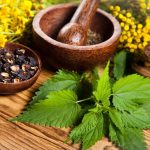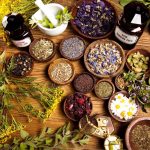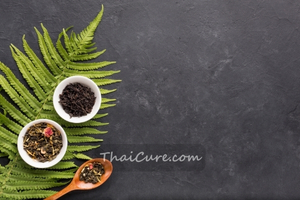- Introduction
- The Tradition of Thai Herbal Remedies
- 1) Lemongrass (ตะไคร้): Calm Digestion & Clarity
- 2) Ginger (ขิง): Settle Nausea, Warm the Core
- 3) Turmeric (ขมิ้น): Soothe Everyday Inflammation
- 4) Galangal (ข่า): Digestive Ease, Clear Flavor
- 5) Holy Basil / Tulsi (กะเพรา): Calm Stress, Support Immunity
- 6) Kaffir Lime (มะกรูด): Brighten Mood, Hair & Skin
- 7) Gotu Kola / Bai Bua Bok (ใบบัวบก): Skin & Tissue Support
- 8) Fingerroot / Krachai (กระชาย): Digestive Aid & Culinary Star
- 9) Phlai (ไพล / Cassumunar Ginger): Muscles, Joints & Compresses
- 10) Pandan (ใบเตย): Calm the Senses, Support Sleep
- How to Use Thai Herbs Safely at Home
- Putting It Together: Simple Everyday Routines
- Ingredient Swaps & Shopping Notes
- Gentle Science & Common Sense
- Conclusion
- FAQs (Quick Mentions You Can Expand Later)
Introduction
If you’ve ever stepped into a Thai kitchen, you already know: the spice rack doubles as a medicine cabinet. From fragrant lemongrass to warming ginger and vibrant turmeric, Thai households have long relied on everyday ingredients to soothe sore throats, calm digestion, and ease muscle aches. This guide gathers the top 10 essential Thai herbal remedies for natural healing at home, offering practical methods, cultural context, and safety tips you can actually use. You’ll learn simple brews, rubs, compresses, and inhalations you can prepare in minutes—starting, of course, with the crowd favorite: lemongrass tea benefits that support digestion and relaxation.
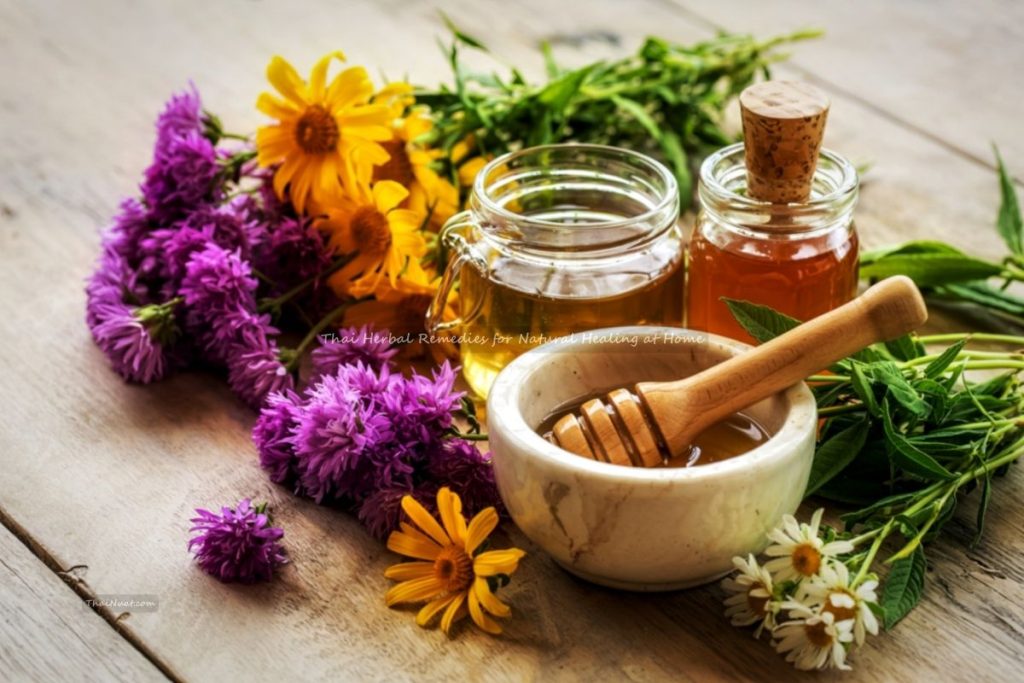
Whether you’re looking for bedtime calm, cold-weather comfort, or faster post-workout recovery, these time-tested tips help you practice holistic self-care with confidence. Throughout the article, you’ll see clear directions for dose, prep, and when to avoid certain herbs. We’ll also link the culinary to the therapeutic—because in Thailand, food is often the gentlest pharmacy. Most importantly, this piece is written to be practical: no exotic equipment, no complex steps, just Thai herbal remedies for natural healing at home that fit your day.
👉 “For a deeper look at the traditions and healing power behind these herbs, see our guide on the Healing Power of Thai Herbal Remedies.”
The Tradition of Thai Herbal Remedies
Traditional Thai medicine blends influences from local folk wisdom, Ayurveda, and Chinese herbal theory. But on a daily level, it’s profoundly practical: grandmothers simmer ginger for nausea, parents rub herbal balms on little chests during cold season, and spa therapists prepare warm compresses stuffed with phlai (Cassumunar ginger) to melt away muscle tension. These practices travel from kitchen to clinic, from street markets to wellness resorts, guided by common-sense principles: support the body’s natural balance, favor gentle methods first, and pair herbs with rest, hydration, and nourishing food.
The beauty of Thai herbal care is that it scales. A cup of tea can steady digestion; a quick steam can open a congested nose; a simple compress can soothe a sore back. Used thoughtfully, these are approachable natural Thai remedies at home—simple, sensory, and satisfying.
👉 “Feeling inspired to try hands-on wellness? Don’t miss our guide on DIY Herbal Remedies at Home: Easy Recipes for Health & Beauty.”
1) Lemongrass (ตะไคร้): Calm Digestion & Clarity
Why it helps: Lemongrass is famed for its crisp, citrusy aroma and gut-settling effects. It’s a go-to for post-meal bloating, mild cramping, and that “heavy” feeling.
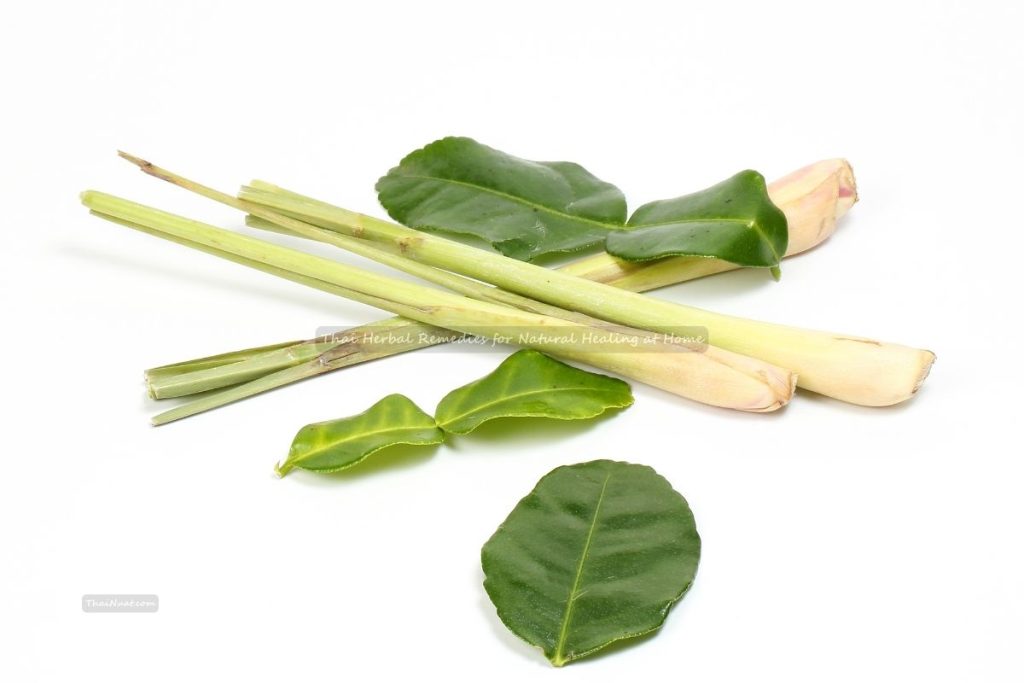
How to use at home (tea):
- Slice 2–3 fresh stalks (or 1–2 Tbsp dried), bruise lightly, and simmer 10 minutes.
- Optional: add a slice of ginger or a strip of kaffir lime peel.
- Sip warm after meals.
Complementary spotlight — lemongrass tea benefits:
- Eases digestive discomfort after rich or fried foods.
- Gently uplifting without caffeine jitters.
- Naturally aromatic—great for mindful evening wind-down.
Extra tips: Use cooled tea as a light facial mist or hair rinse for a fresh scent. If pregnant or on medications, check with your clinician.
Quick use: A small teapot in the evening + deep breathing = a simple ritual with outsized lemongrass tea benefits.
2) Ginger (ขิง): Settle Nausea, Warm the Core
Why it helps: Ginger’s warming spice supports circulation and helps with queasy stomachs. It’s a staple during travel days and rainy seasons.
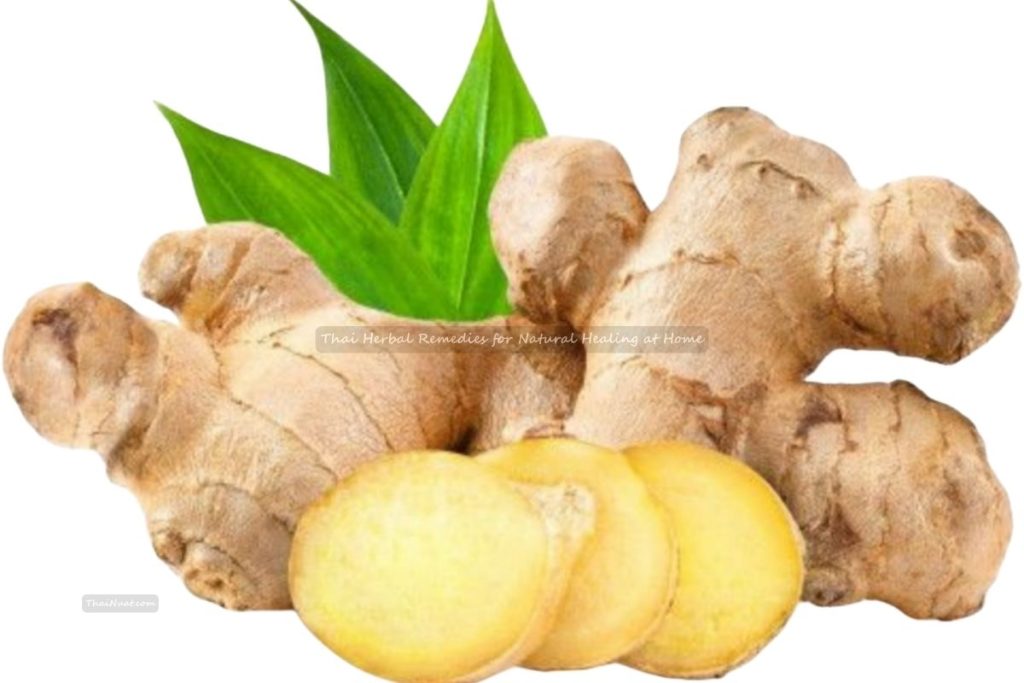
How to use at home (tea for nausea):
- Simmer 6–8 thin slices in 1.5 cups water for 8–10 minutes.
- Sweeten with a touch of honey if desired.
- Sip slowly; small, frequent sips often work best.
Supporting keywords in practice: Many families keep ginger tea for nausea ready during cold/flu spells. For stuffy noses, combine ginger tea with a short herbal steam (see safety section).
Kitchen tip: Add ginger to soups and stir-fries for daily micro-doses of digestive support.
3) Turmeric (ขมิ้น): Soothe Everyday Inflammation
Why it helps: Turmeric’s golden pigment signals potent plant compounds often used for joint stiffness and general soreness.
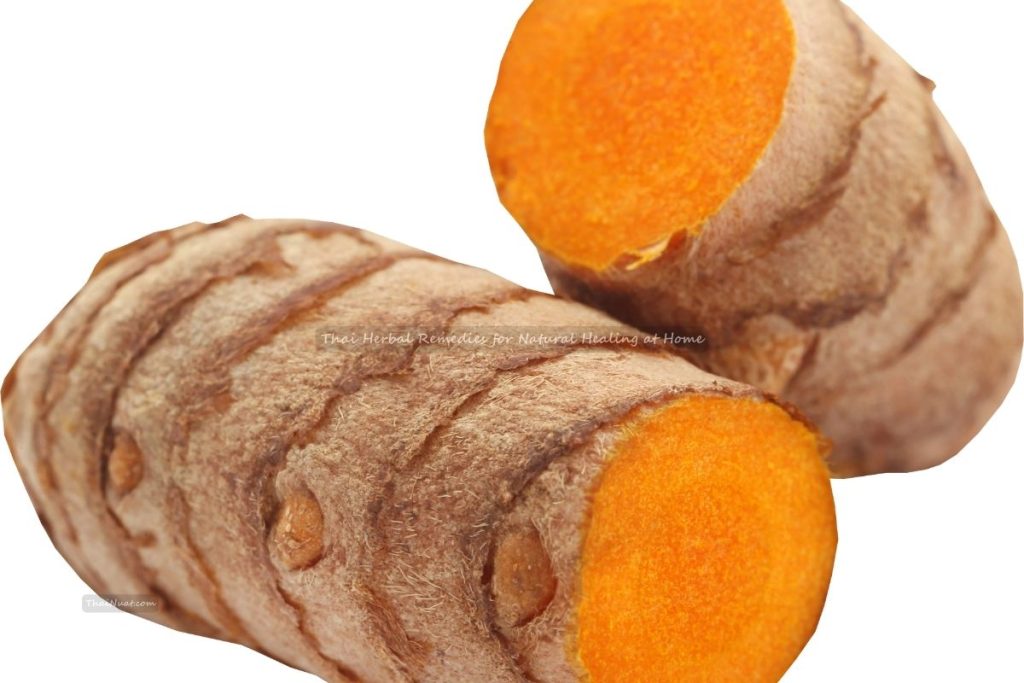
How to use at home (turmeric tea):
- Simmer ½ tsp ground turmeric (or 1 tsp freshly grated) in 1 cup water or milk for 5–7 minutes.
- Add a pinch of black pepper and a sliver of ginger.
- Sweeten lightly; enjoy before bedtime.
Everyday application: Many readers explore turmeric tea benefits as part of a nighttime routine, along with gentle stretches. As a kitchen staple, curry pastes and soups also deliver turmeric anti-inflammatory support in delicious ways.
Topical idea: A tiny turmeric-yogurt paste can be dabbed on occasional blemishes—spot test to avoid staining and irritation.
4) Galangal (ข่า): Digestive Ease, Clear Flavor
Why it helps: Cousin to ginger yet more piney and peppery, galangal supports digestion and pairs beautifully with lemongrass in soups.
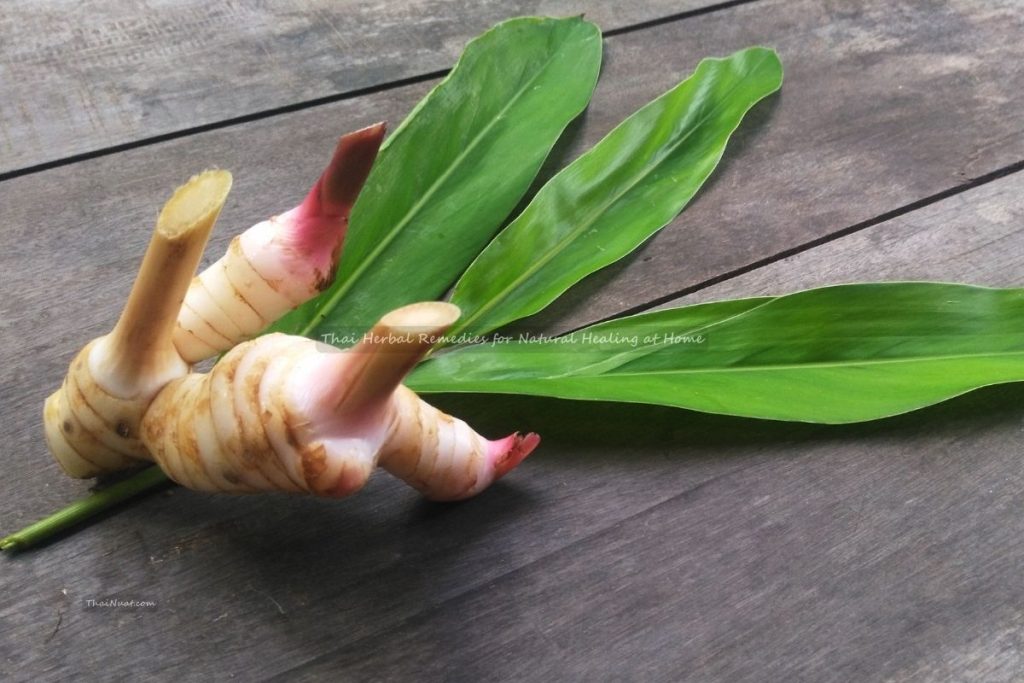
How to use at home (light decoction):
- Slice 4–5 thin coins of fresh galangal.
- Simmer 10 minutes with lemongrass.
- Strain and sip after a heavy meal.
Culinary-therapeutic link: Tom kha soup isn’t just comfort food—it marries Thai herbs for digestion (galangal, lemongrass, kaffir lime) in one soothing bowl.
Tip: Fresh is best; dried can be used but is less aromatic. Avoid high doses if you have sensitive stomach lining.
5) Holy Basil / Tulsi (กะเพรา): Calm Stress, Support Immunity
Why it helps: Holy basil is cherished for mood steadiness and respiratory ease. While Thai kitchens also use hot basil (โหระพา) and sweet basil (แมงลัก), holy basil stress relief is a wellness classic.
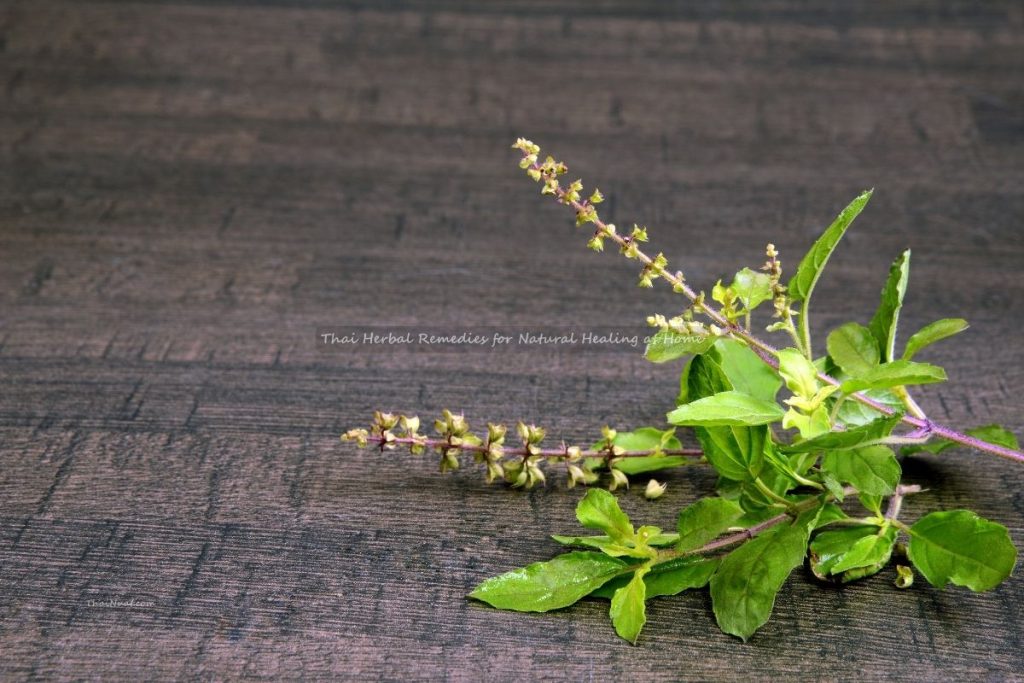
How to use at home (tulsi tea):
- Steep 1 tsp dried holy basil in hot water for 5–7 minutes.
- Add honey and a squeeze of lime if desired.
When to reach for it: Afternoon slumps, anxious evenings, or the first hint of a cold. Combine with deep nasal breathing over a bowl of warm water (towel tent) for a simple at-home steam.
Note: If on blood sugar or thyroid medications, consult your clinician before daily use.
6) Kaffir Lime (มะกรูด): Brighten Mood, Hair & Skin
Why it helps: Kaffir lime leaves and peel have an unmistakable aroma that lifts the spirit; the peel’s oils are used traditionally in hair rinses and scalp care.
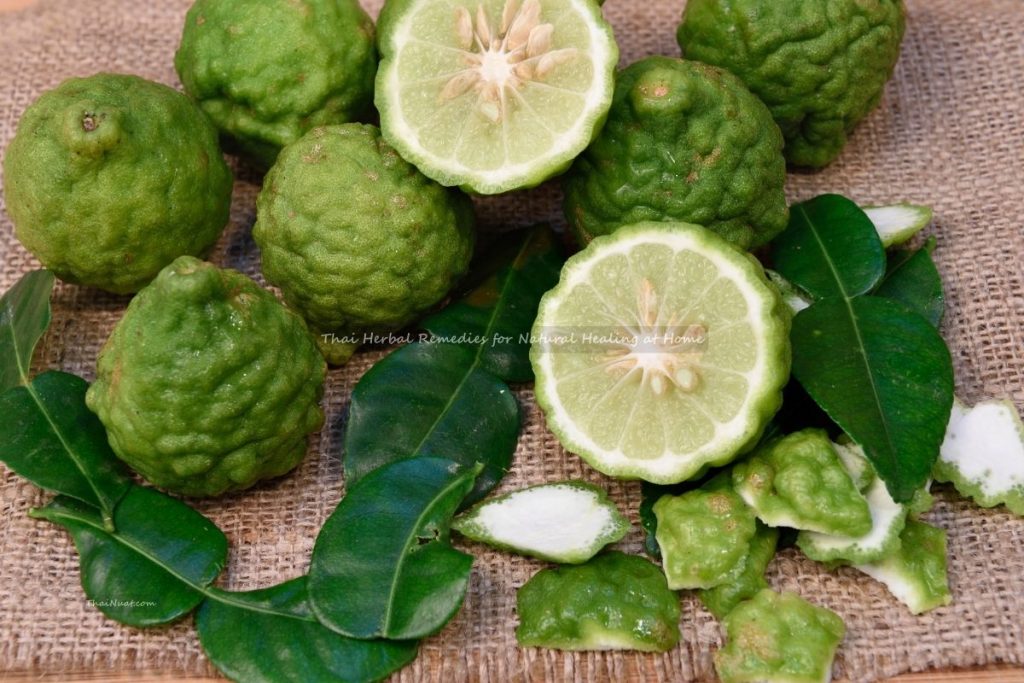
How to use at home:
- Aromatic tea: Simmer 3–4 torn leaves with lemongrass for 5–7 minutes.
- Hair rinse: Steep peel in warm water 15 minutes; cool and rinse after shampooing.
Key benefits: Popular for clarity, light detox vibes, and self-care rituals. Many readers search for kaffir lime leaves benefits for both mood and beauty care.
Tip: A small bowl of hot water with a few leaves makes a fast room aroma—ideal for afternoon resets.
7) Gotu Kola / Bai Bua Bok (ใบบัวบก): Skin & Tissue Support
Why it helps: Traditionally used for skin integrity and gentle cooling, gotu kola is a staple in Thai markets as a juice or mild tea.
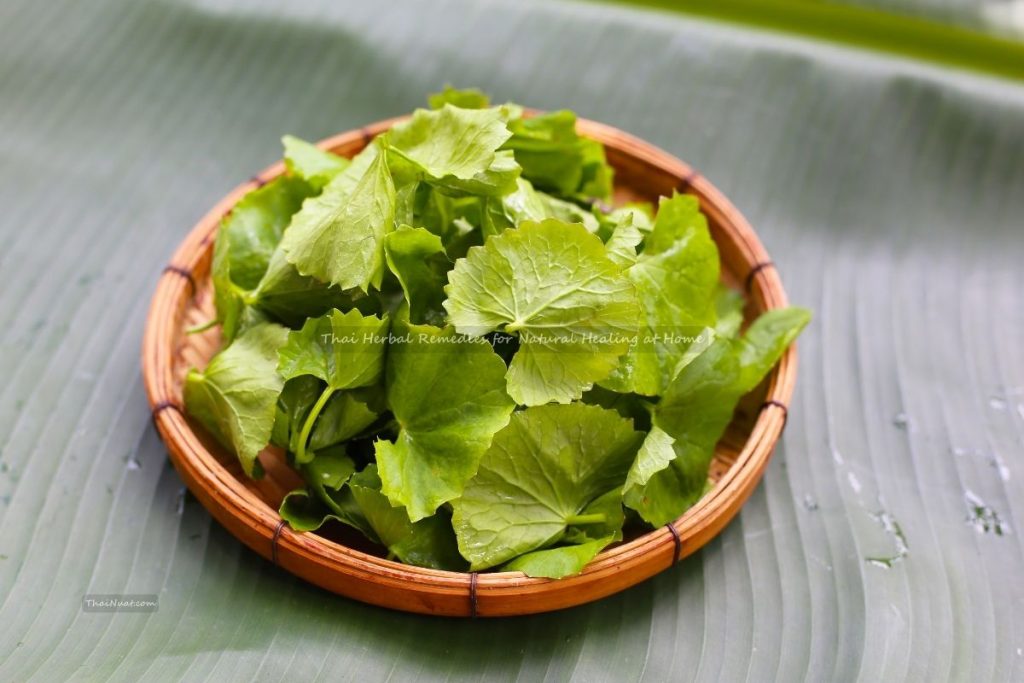
How to use at home:
- Tea: Steep 1 tsp dried leaf in hot water 5 minutes.
- Juice: Blend fresh leaves with water, strain, and add a bit of honey and lime.
Focus uses: Occasional skin flare days or when you want a cooling beverage in hot weather. For topical care, look for creams with centella asiatica extract. Queries like gotu kola for skin healing are common—and for good reason.
Safety: Avoid large quantities if pregnant or when taking sedatives; start low and observe.
8) Fingerroot / Krachai (กระชาย): Digestive Aid & Culinary Star
Why it helps: Fingerroot’s flavor is earthy and slightly peppery. In Thai cooking, it supports digestion while adding complexity to curries and stir-fries.
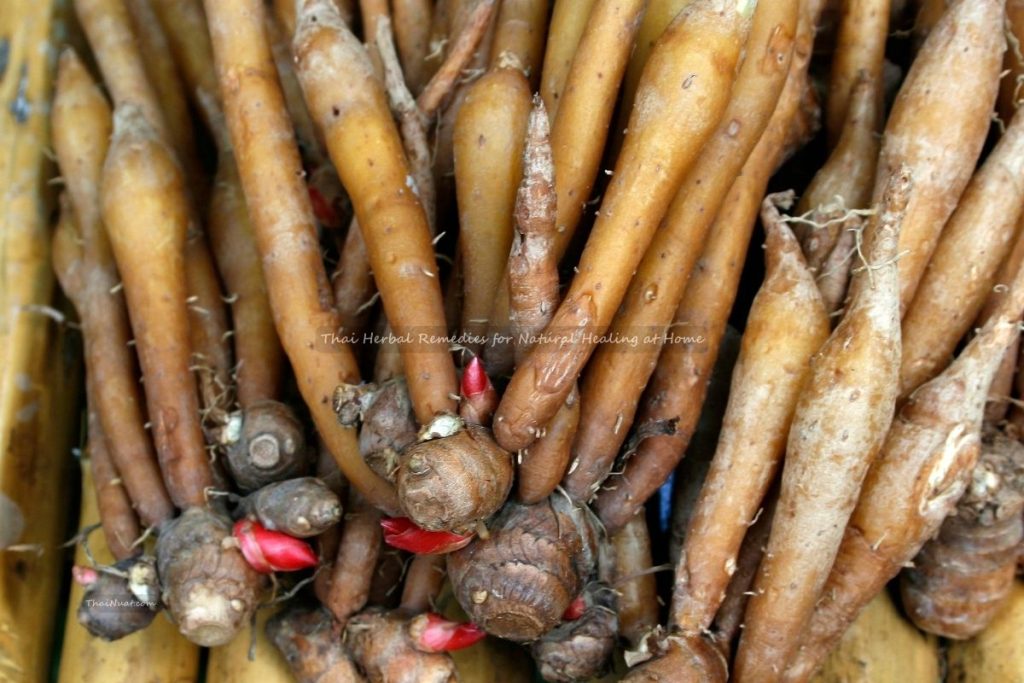
How to use at home (post-meal tea):
- Lightly crush 3–4 fingerroot rhizomes.
- Simmer 10 minutes with a slice of ginger.
- Sip warm; it’s a satisfying fingerroot digestive aid after heavy meals.
Everyday tip: Add thin slivers to soups and seafood dishes to cut greasiness and brighten flavors.
Note: Not everyone loves the taste straight—pair with lemongrass or pandan to soften the profile.
9) Phlai (ไพล / Cassumunar Ginger): Muscles, Joints & Compresses
Why it helps: Phlai is the therapist’s secret for sore backs and tight shoulders. It’s central to the famous Thai hot compress ball used in massage.
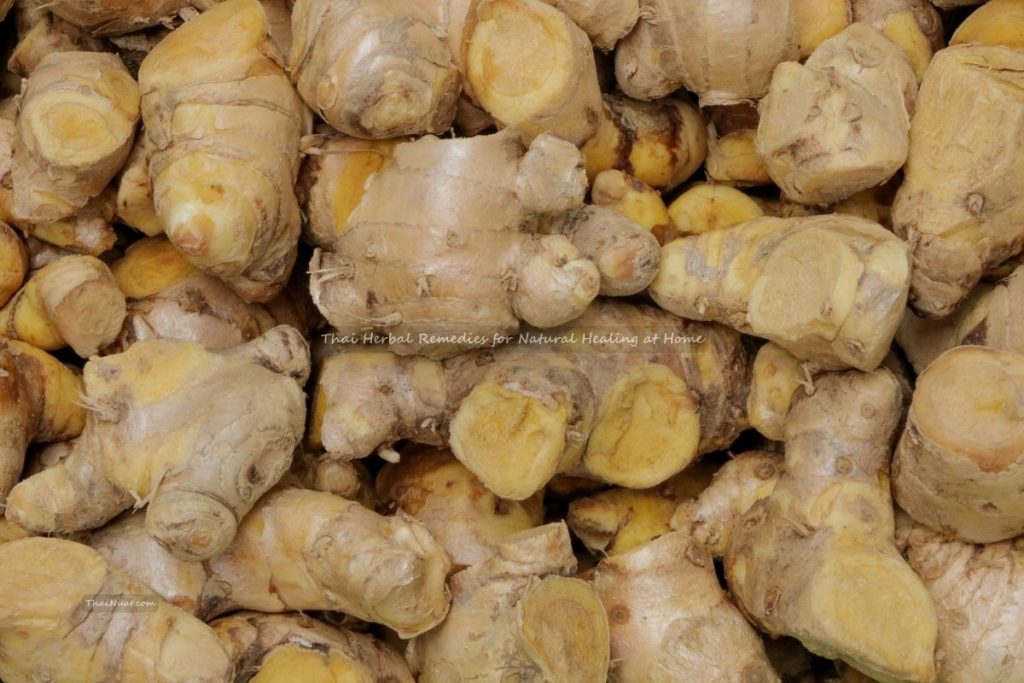
How to use at home (simple compress):
- Mix dried phlai powder with ginger and turmeric (optional), wrap in cotton, and steam until warm.
- Press along the back, shoulders, and calves for 10–15 minutes.
Keyword in action: Many spa manuals celebrate Thai herbal compress benefits for easing daily aches and promoting circulation. At home, you can replicate a gentle version with a warm towel infused in herbal decoction—just test heat carefully.
Topical option: Look for balms containing phlai for quick relief on busy days.
10) Pandan (ใบเตย): Calm the Senses, Support Sleep
Why it helps: Pandan is the lullaby leaf—soft vanilla-like fragrance, instant nostalgia. It’s used in desserts and drinks for its comfort factor.

How to use at home (bedtime tea):
- Tie 2–3 leaves into a knot; simmer 10 minutes.
- Add a squeeze of lime or a slice of ginger if you like complexity.
- Sip warm 30–60 minutes before bed.
Lifestyle note: Evening pandan tea + screen-free wind-down can promote a gentler sleep onset. Many readers look for pandan calming aroma ideas—this is the simplest.
Aromatherapy tip: Dry a few leaves and tuck into linen drawers for a delicate, cozy scent.
How to Use Thai Herbs Safely at Home
Herbs are helpers, not magic bullets. A few practical guidelines keep your routine safe and effective:
- Start small, go slow. Use the lowest effective amount; track how you feel.
- One new herb at a time. That way, you know what’s working (or not).
- Check interactions. If you take medications (e.g., blood thinners, diabetes or thyroid meds), are pregnant, or breastfeeding, consult your clinician first.
- Topical test. Always patch-test balms or pastes to avoid skin irritation or staining (turmeric, we’re looking at you).
- Steam safely. Keep steams brief (5–7 minutes), eyes closed, water not boiling over.
- Know red flags. Fever that persists, shortness of breath, severe pain, or sudden swelling needs medical attention.
Short version: enjoy the gentleness of herbs while respecting boundaries. That’s the spirit of Thai herbal remedies for natural healing at home—attentive, balanced, and informed.
Putting It Together: Simple Everyday Routines
To make these practices stick, anchor them to existing habits:
- Morning digestif: Warm lemongrass + a coin of galangal after breakfast.
- Afternoon reset: A cup of holy basil tea and three slow breaths.
- Evening wind-down: Turmeric milk or pandan tea after a light stretch.
- Workout recovery: A quick phlai-infused warm towel on tight calves; finish with a short ginger tea.
Rotate based on season, workload, and family needs; variety reduces boredom and keeps your palate happy.
Ingredient Swaps & Shopping Notes
- Fresh vs dried: Fresh gives fragrance; dried offers convenience. Keep dried lemongrass, ginger, and turmeric on hand for “rainy day” kits.
- Sweeteners: A touch of honey or palm sugar is optional. Aim for lightly sweet at most.
- Culinary pairings:
- Lemongrass + kaffir lime = bright and clarifying.
- Ginger + turmeric = cozy anti-inflammatory duo.
- Pandan + lime = dessert-like aroma without the sugar.
- Storage: Wrap fresh stalks/leaves in paper towels and refrigerate in an airtight box; most keep 5–7 days. Freeze chopped lemongrass and ginger for month-long back-ups.
Gentle Science & Common Sense
You’ll find a spectrum of evidence behind these herbs—from long folk usage and culinary tradition to modern lab studies and clinical observations. For home practice, the most important “data” can be your own consistent, careful trial: a two-week ginger tea for nausea routine, a nightly pandan calming aroma ritual, or a weekend of Thai herbal compress benefits for tight shoulders. Keep notes, adjust, and build a personalized playbook.
Conclusion
Thai tradition reminds us that care can be simple: warm water, fragrant leaves, a few steady breaths. By putting Thai herbal remedies for natural healing at home into easy daily routines, you can support digestion, calm stress, and ease those little aches long before they become big ones. Start with the basics—brew a pot and notice how your body responds. If you’re unsure where to begin, go with lemongrass tea benefits tonight and a ginger brew tomorrow. Small rituals, repeated kindly, add up to a more balanced, resilient you.
FAQs (Quick Mentions You Can Expand Later)
1) Can I mix herbs in one tea?
Yes—pairing lemongrass with ginger or kaffir lime is classic. Start with small amounts and notice which blends suit you.
2) How often can I drink these teas?
1–2 cups per day is typical for gentle support. Rotate herbs across the week to keep flavors interesting and benefits balanced.
3) Are there caffeine-free options for evenings?
All the teas here are naturally caffeine-free. For bedtime, pandan or turmeric milk is especially soothing.
4) What about kids?
Use lighter brews, smaller amounts, and check with your pediatric clinician, especially for children under 6 or with chronic conditions.
5) Can I use essential oils instead?
For topical aroma, yes—but dilute well and avoid internal use unless guided by a qualified professional. Many families still prefer whole-plant teas, steams, and compresses for gentleness.

